|
|
Updated as per personal communication with Carlot Didier
Updated as per personal communication with Frederik Goussey
Updated as per More, Kitching and Cocucci's Hawkmoths of Argentina 2005, December 2009
Updated as per
AN ANNOTATED CHECKLIST OF THE SPHINGIDAE OF BOLIVIA, December 2009
Updated as per CATE (Venezuela: Suapure); February 6, 2011
Updated as per French Guiana Systematics: Sphingidae; May 12, 2011
|
Isognathus caricae caricae
(Linnaeus, 1758) Sphinx
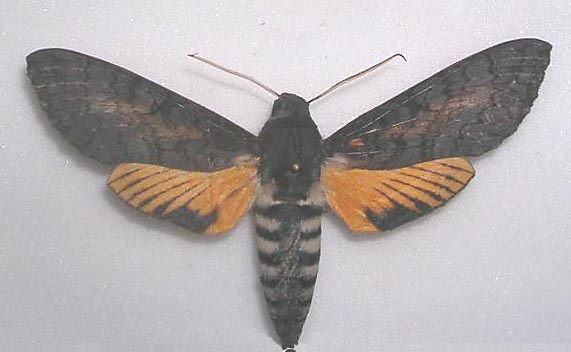
Isognathus caricae male, Pote, Minas Gerais, Brazil,
November 11, 2004, courtesy of Frederik Goussey.
This site has been created by
Bill Oehlke at oehlkew@islandtelecom.com
Comments, suggestions and/or additional information are welcomed by Bill.
TAXONOMY:
Family: Sphingidae, Latreille, 1802
Subfamily: Macroglossinae, Harris, 1839
Tribe: Dilophonotini, Burmeister, 1878
Genus: Isognathus G. Felder & R. Felder, 1862 ...........
Species: caricae Linnaeus, 1758
|
MIDI MUSIC
.....It's a Wonderful World.....
copyright C. Odenkirk
ON.OFF
<bgsound src="world.mid" LOOP=FOREVER>
|
DISTRIBUTION:
Isognathus caricae
(Wing span: males: 94mm; females: 104mm),
flies from
Costa Rica to
Venezuela: Suapure;
French Guiana: St. Laurent du Maroni; Saint-Georges l'Oyopok
Bolivia: Santa Cruz;
Argentina: Buenos Aires, Cordoba, Misiones; and
Brazil: Minas Gerais, Bahia; with "America" given
as the specimen type locality. Carlot Didier reports them from
French Guiana.
This is the only Isognathus species that has the dark marginal band of the hindwing upperside being replaced by a series of black
streaks along the veins. CATE
The forewing has two orangey-brown patches connected below the cell mark, and a smaller basal patch along the inner margin. Otherwise forewings are dark grey.
Subspecies Isognathus caricae rainermarxi Eitschberger, 1999, flies in
Peru: Amazonas; and it may be this subspecies that flies in the more southerly nations listed above.
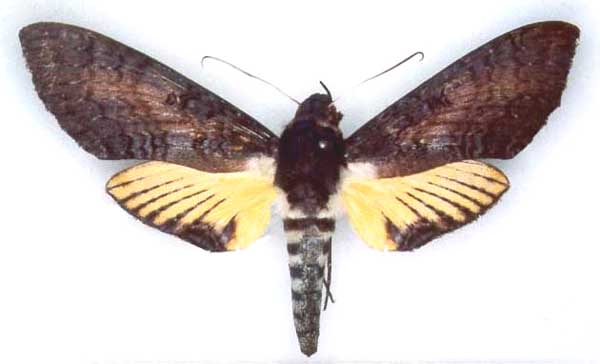
Isognathus caricae male, Costa Rica, courtesy of Dan Janzen.
FLIGHT TIMES:
There are probably several flights
throughout the year. The specimen courtesy of Frederik Goussey was taken in November.
In French Guiana specimens have been reported in February and December.
ECLOSION:
Moths emerge from pupae in thin-walled cocoons
under leaf litter within 8-24 days of pupation.
SCENTING AND MATING:
Females call in the males with a pheromone released from a gland at the tip of
the abdomen. Adults nectar at flowers, including petunia.
EGGS, LARVAE, PUPAE:
Females probably lay eggs on leaves of Apocynacea. Himatanthus
obovatus, Allamanda cathartica and Allamanda schottii have been reported as a host. Larvae have
long tails; colouration suggests they are unpalatable to birds. |
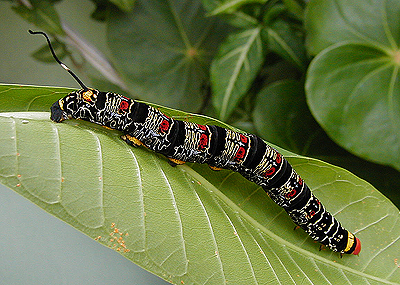 |
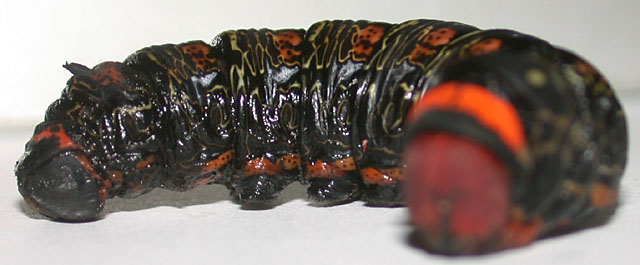
Dark prepupal Isognathus caricae larva, French Guiana,
courtesy of Antoine Guyonnet
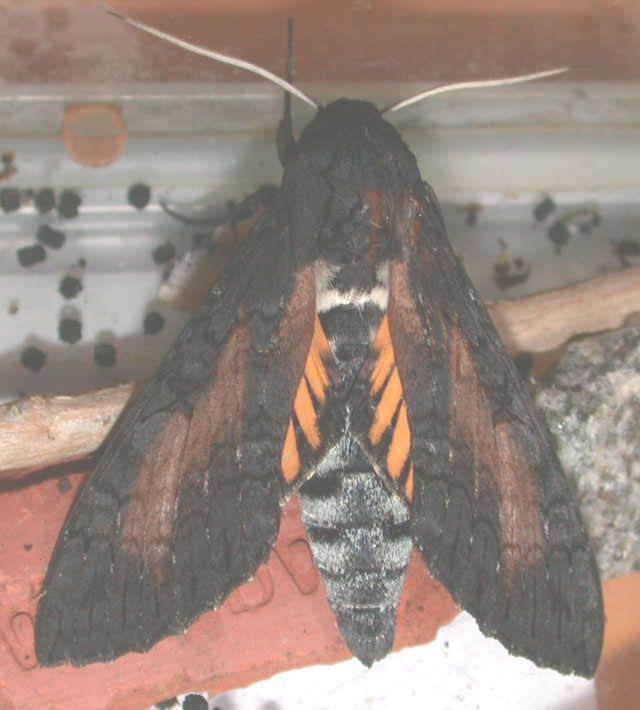
Isognathus caricae moth from larva above, St. Laurent du Maroni, French Guiana,
courtesy of Antoine Guyonnet
The pupae are also quite colourful, and, I suspect,
are very lively. Moths generaly emerge witin 8-24 days of pupation. |
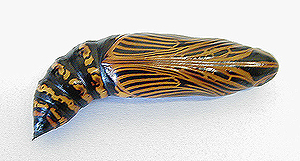 |
Return to Sphingidae Index
Return to Dilophonotini Tribe





